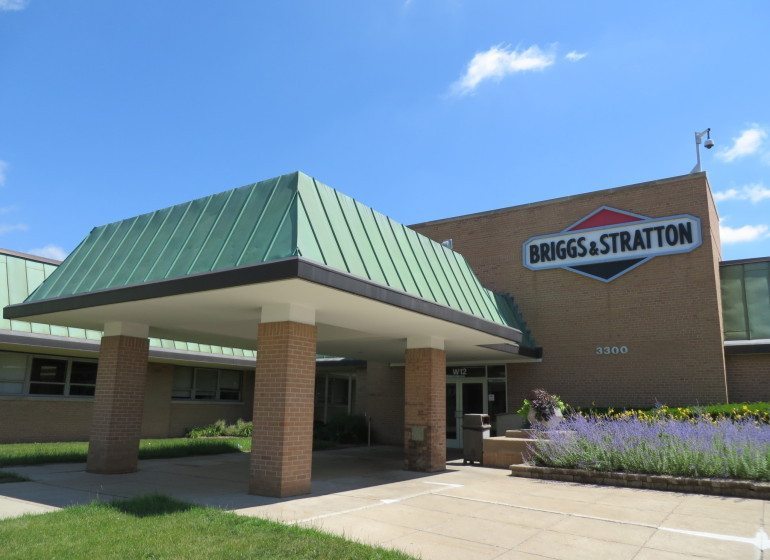Wauwatosa-based Briggs & Stratton Corp. is considering a potential asset sale that could cover $195 million in maturing debt while also allowing the company is simplify its business and increase its focus on power application.
What exactly the company would be selling, however, remains unclear.
The potential asset sale is an outgrowth of a market dynamics project Briggs launched last year. Briggs has been challenged by stagnant demand for its residential products and a retail environment complicated by the bankruptcy of Sears. The project expanded in the most recent quarter to include a review of the company’s portfolio.
“During the first half of the (fiscal) year, we devoted significant time to our market dynamics project,” said Todd Teske, chairman, president and chief executive officer of Briggs & Stratton. “These efforts have been very constructive and support our belief that a sharp focus on our core strength of power application will better position the company for long-term sustainable growth and higher returns.”
Briggs reported a 13.4% decline in net sales to $437.9 million for its second fiscal quarter. The company’s net loss widened from $2.6 million to $15.3 million.
During the company’s earnings call Thursday, Teske declined to go into specifics on what businesses or assets Briggs might sell. He did note the residential lawn and garden markets that Briggs has traditionally focused on have been and remain challenging. He also said that while the company has found success entering into new commercial applications, those actions have come with increased complexity.
Teske did say that reaction to Briggs’ recently launched Vanguard battery packs has given the company confidence it can create value outside its traditional focus areas. Those batteries offer 1 kWh to 20 kWh, more than what is needed for hand or power tools and less than the batteries used on a car.
“That sweet spot is where Briggs has historically played in terms of engines,” Teske said. “The really exciting thing to me is it starts to open up markets that we haven’t really played in before.”
He said the batteries would not be for small walk-behind mowers but would instead be focused on commercial applications and areas that go beyond turf care. In particular, he said the batteries would be well suited to work with distributed power generation like wind and solar.
Teske acknowledged the battery business would require investment, but argued that others entering the market are starting from “ground zero” when it comes to understanding power application. He said the required investment is reasonable but the potential returns are significant.
Briggs plans to hold an investor call in the next four to six weeks to provide additional details on the sale. The company has already engaged investment banks to work through the sale process.
Mark Schwerfeger, chief financial officer of Briggs, did say the asset sale could provide enough resources for the company to cover the maturity of around $195 million in senior notes due in December 2020. However, he added the company does not plan to rely solely on the sale proceeds and will likely raise additional debt at the same time as the sales process.
Briggs also suspended its dividend as it works through the sale process to provide additional financial flexibility. The most recent quarterly dividend was 5 cents per share over the last two quarters. The dividend had been 14 cents per share in the first half of 2019.


